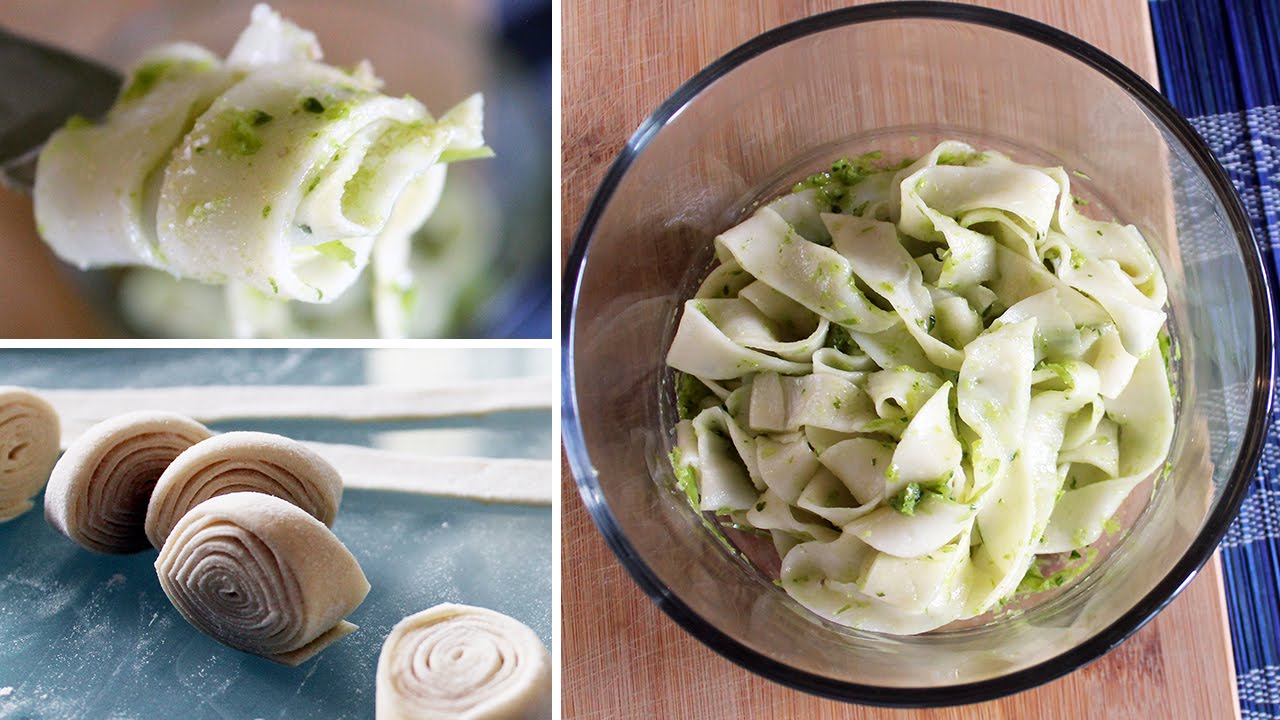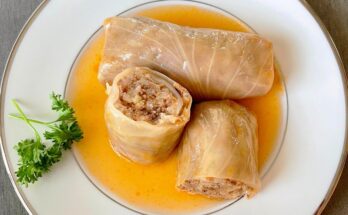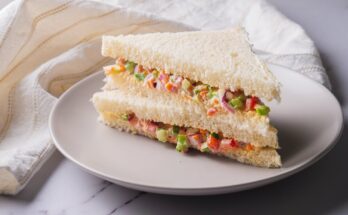Fresh Pasta Recipe: Making fresh pasta from scratch is a game-changer for any home cook. Unlike store-bought pasta, fresh pasta has a rich, delicate texture and absorbs sauces beautifully. It might seem intimidating at first, but with the right ingredients, tools, and techniques, anyone can master the art of homemade pasta.
In this guide, we’ll walk you through every step—from mixing the dough to serving the final dish—so you can impress your family and friends with authentic, restaurant-quality pasta.
Benefits of Making Fresh Pasta at Home
- Better Taste & Texture – Fresh pasta is softer and has a better bite compared to dry pasta.
- Customizable Ingredients – You can control the quality of ingredients, making it healthier.
- Variety of Shapes & Flavors – Experiment with different flours, herbs, and shapes.
- Satisfying & Fun – Making pasta is a rewarding experience that enhances your cooking skills.
Ingredients Needed for Fresh Pasta
Before we start, gather these simple ingredients:
Basic Ingredients:
- Flour – 2 cups (00 flour for a smooth texture, semolina for a firmer bite)
- Eggs – 2 large eggs + 1 egg yolk (for extra richness)
- Olive Oil – 1 tablespoon (optional, for added flexibility)
- Salt – ½ teaspoon
- Water – As needed (only if the dough is too dry)
Flour Options:
- All-purpose flour – Works well but lacks elasticity.
- 00 flour – Best for silky, smooth pasta.
- Semolina flour – Adds a firmer texture, ideal for certain pasta shapes.
Essential Tools for Making Fresh Pasta
While pasta-making can be done with minimal tools, having the right equipment makes the process easier.
Mixing Tools:
- Bowl – To mix the ingredients.
- Fork or hands – For blending the eggs into the flour.
Rolling Tools:
- Rolling pin – Traditional but requires effort.
- Pasta machine – Provides even thickness and speeds up the process.
Cutting Tools:
- Sharp knife – For cutting long noodles.
- Pasta cutter – For decorative edges.
- Pizza cutter – An easy alternative for shaping pasta.
Step 1: Preparing the Dough
Mixing the Ingredients
- Make a flour well – On a clean surface, pile the flour and create a well in the center.
- Crack eggs into the well – Add eggs, salt, and olive oil.
- Slowly mix – Using a fork, gradually incorporate the flour into the eggs until a sticky dough forms.
Kneading the Dough
- Work the dough – Knead it with the heel of your hand for about 8-10 minutes.
- Check for consistency – The dough should be smooth and slightly elastic.
- Adjust as needed – If too dry, add a few drops of water. If too sticky, sprinkle a bit more flour.
Resting the Dough
- Wrap the dough in plastic wrap and let it rest for at least 30 minutes at room temperature.
- This helps the gluten relax, making it easier to roll.
Step 2: Rolling the Pasta Dough
Using a Rolling Pin (Manual Method)
- Divide the dough into smaller sections.
- Flatten each section and roll outward.
- Rotate and continue rolling until thin (about 1mm thickness).
Using a Pasta Machine (Easier Method)
- Set the machine to the widest setting.
- Roll the dough through and fold it in half.
- Repeat 3-4 times, then gradually decrease the thickness setting.
Preventing Sticking
- Dust with flour between rolls.
- Avoid excessive flour, which can make the pasta dry.
Step 3: Cutting the Pasta
Cutting Methods
- For Fettuccine/Tagliatelle – Roll the dough into a log and slice evenly.
- For Lasagna Sheets – Cut large rectangular pieces.
- For Ravioli – Use a cutter or knife to shape squares, adding filling.
Storing Freshly Cut Pasta
- Short-term – Place on a floured surface and use within a few hours.
- Long-term – Dust with flour, form loose nests, and refrigerate or freeze.
Step 4: Cooking Fresh Pasta
Cooking fresh pasta is quick and simple, but there are a few essential steps to follow to ensure perfect results.
Boiling Fresh Pasta
- Use a large pot – Fresh pasta expands slightly, so use a big pot to prevent sticking.
- Add plenty of water – Use about 4-6 quarts of water per pound of pasta.
- Salt the water generously – Add 1-2 tablespoons of salt to enhance flavor.
- Bring water to a rolling boil – This ensures the pasta cooks evenly.
- Drop in the pasta – Stir immediately to prevent clumping.
- Cook quickly – Fresh pasta takes only 2-4 minutes to cook, depending on thickness.
Avoiding Overcooking
- Taste the pasta after 2 minutes; it should be slightly firm (al dente).
- If using in baked dishes like lasagna, undercook slightly.
Draining & Serving
- Use a slotted spoon or pasta strainer.
- Never rinse fresh pasta; it removes the starch that helps sauce cling better.
- Toss immediately with your preferred sauce.
Step 5: Serving and Pairing Fresh Pasta
Fresh pasta pairs beautifully with a variety of sauces and ingredients.
Best Sauces for Fresh Pasta
- Light Sauces:
- Olive oil with garlic and chili flakes
- Lemon butter sauce
- Pesto (basil or sun-dried tomato)
- Classic Italian Sauces:
- Marinara (tomato-based)
- Alfredo (cream and Parmesan)
- Bolognese (meat sauce)
Adding Proteins & Vegetables
- Proteins: Grilled chicken, shrimp, Italian sausage
- Vegetables: Spinach, mushrooms, cherry tomatoes, bell peppers
Garnishing for Extra Flavor
- Fresh basil or parsley
- Shaved Parmesan or Pecorino Romano
- A drizzle of extra virgin olive oil
Storing Fresh Pasta for Later Use
If you’re making pasta in advance, here’s how to store it properly.
Short-Term Storage (Refrigeration)
- Place fresh pasta on a baking sheet, dusted with flour.
- Cover loosely with plastic wrap and refrigerate for up to 2 days.
Long-Term Storage (Freezing)
- Dust pasta with flour, form small nests, and freeze on a tray.
- Once frozen, transfer to airtight containers or freezer bags.
- Fresh pasta can be frozen for up to 2 months.
Cooking Frozen Pasta
- Drop frozen pasta directly into boiling water without thawing.
- It will take about 1-2 minutes longer to cook.
Common Mistakes and How to Avoid Them
Dough Issues
- Too Dry? Add a teaspoon of water or an extra egg yolk.
- Too Sticky? Knead with a bit more flour until smooth.
- Too Tough? The dough might need more kneading or resting time.
Rolling & Cutting Problems
- If the dough shrinks back, let it rest longer before rolling.
- To prevent pasta from sticking, dust with flour while rolling.
Cooking Mistakes
- Pasta sticking together? Stir immediately after adding to water.
- Overcooked pasta? Always check for doneness after 2 minutes.
Variations of Fresh Pasta Recipes
Once you master classic pasta, try experimenting with different flavors!
Whole Wheat Pasta
- Replace half of the flour with whole wheat flour for a nuttier flavor.
Spinach Pasta (Green Pasta)
- Blend ½ cup of cooked spinach and mix it into the dough.
Gluten-Free Pasta
- Use a mix of rice flour, tapioca starch, and xanthan gum for elasticity.
Homemade Pasta vs. Store-Bought Pasta
Taste & Texture Comparison
- Fresh pasta is softer, silkier, and more flavorful than dry pasta.
- Dry pasta is chewier and better suited for thick sauces.
Cost-Effectiveness
- Homemade pasta is cheaper per serving compared to high-quality store-bought pasta.
Health Benefits
- You control the ingredients, avoiding preservatives.
- Fresh pasta has fewer additives and is more nutritious.
Tips and Tricks for Perfect Fresh Pasta Every Time
- Let the dough rest – It improves elasticity.
- Use the right flour – 00 flour or semolina for best results.
- Don’t skip salting the water – This enhances the pasta’s flavor.
- Undercook slightly if using pasta in baked dishes.
- Fresh pasta absorbs more sauce – So don’t drown it in too much sauce!
FAQs about Fresh Pasta Recipe
What ingredients do I need for homemade fresh pasta?
To make fresh pasta, you’ll need simple ingredients: all-purpose flour, eggs, and a pinch of salt. Some recipes might also call for olive oil and a small amount of water, depending on the dough’s consistency and your preference.
How long does it take to make fresh pasta from scratch?
The total time to make fresh pasta from scratch, including preparation and resting the dough, typically ranges from 1 to 2 hours. Kneading the dough takes about 10-15 minutes, resting usually takes 30 minutes, and rolling out and cutting vary based on the tools and techniques used.
Do I need a pasta machine to make pasta?
No, a pasta machine is not necessary, but it can make the process easier and help achieve uniformly thin pasta. You can also roll the dough by hand with a rolling pin and cut it into shapes with a sharp knife or a pastry cutter.
Can I make fresh pasta ahead of time?
Yes, fresh pasta can be made ahead of time. You can store it in the refrigerator for up to 2 days or freeze it for up to a month. Ensure it’s dusted with a little flour or neatly nestled between layers of parchment paper to prevent sticking.
Is fresh pasta better than store-bought?
Many people prefer fresh pasta for its tender, silky texture and rich flavor, which can enhance various dishes. However, whether fresh pasta is “better” can depend on personal preference and the specific recipe.
What are some common mistakes when making fresh pasta
Common mistakes include over-kneading the dough, making it too dry or too wet, and not allowing it to rest properly, which can all affect the texture. Another mistake is not using enough flour when rolling out the pasta, leading to sticking and tearing.
How can I flavor my fresh pasta?
You can incorporate flavors into your pasta dough by adding pureed spinach, sun-dried tomatoes, herbs, or spices to the dough mixture. This is a great way to enhance your pasta with unique tastes and colors.
Making fresh pasta at home is a fun and rewarding experience. With this step-by-step guide, you’ll be able to create delicious, homemade pasta that’s far superior to anything store-bought.
Now, it’s time to roll up your sleeves and start making pasta like a pro!



